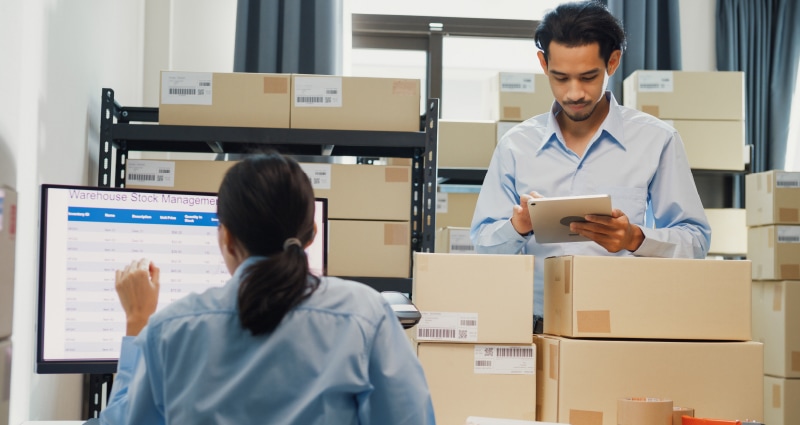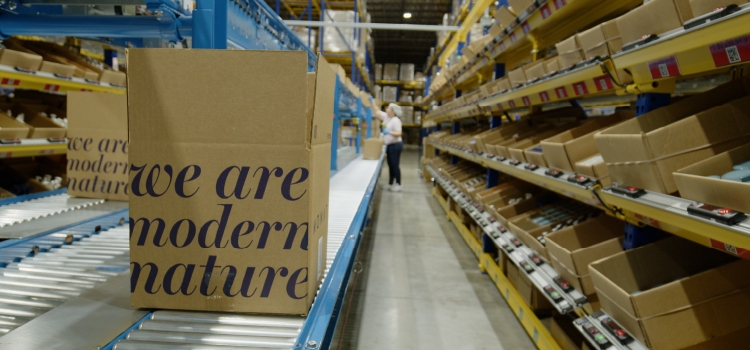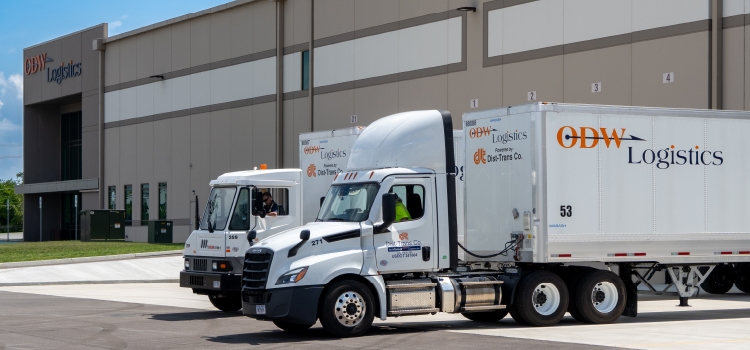Getting to Big: SMBs Embrace Tech and Partnerships

Logistics can sometimes be challenging for small businesses that frequently have limited resources and a laser focus on core competencies. But with the right technologies and partners, SMBs can develop—and execute—supply chain strategies on par with even the largest players.
At the heart of every small business lies a great idea. Someone has a dream or spies an unfulfilled need and it becomes the genesis for a fledgling enterprise. However, if that small business has any hope of sustaining itself and growing into a mid-sized business or larger, it’s essential for the company to invest in supply chain partnerships and technology and regularly reassess its needs.
Small and mid-sized businesses (SMBs) are naturally focused on their product or service, but the ins and outs of supply chain and logistics planning may not be an area of specialty. Any SMB whose enterprise involves moving physical inventory must understand that failure to prepare and anticipate demand can kill even the best idea before it gets off the ground.
For SMBs, navigating supply chain operations and learning to partner with the right logistics and technology vendors can be just as important—maybe even more so—as it is for large companies.
OPEN FOR BUSINESS
Newly established companies hope that orders come in; they are excited and ready for their initial customers. Typically, they are prepared for orders to ramp up and may even be ready for a sudden surge, at least at the front end.
“The order-entry division or front end of a company’s supply chain can handle increasing demand, but the back end usually needs help,” says Brandon Novak, a senior director at consultancy Alpine Supply Chain Solutions.
For businesses at this stage, Alpine encourages investment in goods-to-person (GTP) automation technologies. Novak calls these quick wins, or plug-and-play scenarios, involving software that can improve picking inefficiencies fairly quickly in order to keep up with increasing demand.
“These technologies don’t require nearly as much infrastructure and time investment as implementing a whole warehouse management system,” he says.
If an SMB doesn’t have the capital to invest in a full GTP solution, there are smaller technologies such as automated guided vehicles (AGVs), automated robots and other types of product-to-picker solutions that are smaller in scale but could potentially help an operation keep productivity and efficiency humming cost effectively.
THE SURPRISE ELEMENT
Although undoubtedly good for business, the unexpected popularity of a product or products can cause major supply chain headaches for SMBs. When there’s no infrastructure in place to handle such a surge, Novak suggests SMBs lean into their vendors for a short-term solution.
“If it’s possible to push any packaging or additional labeling upstream to vendors, companies should seize that opportunity so they have less work to do internally,” he says. The same applies to the opportunity to drop-ship directly from those same vendors.
Relying on vendors in the short term buys an SMB some time to create or find a solution that will serve them more effectively over the long term. This might entail engaging a third-party logistics (3PL) provider and determining how to best leverage the 3PL’s technology offerings.
3PLs also offer specific market expertise that is helpful for SMBs. Some 3PLs specialize in cold storage or pharmaceuticals, for instance, while others concentrate on other niches. “3PLs are starting to become a lot more targeted in the services they provide and the markets they serve,” says Novak.
Before selecting a 3PL partner, Novack advises SMBs to interview the company just like they would any prospective employee. Key elements to investigate are the 3PL’s technology offerings and value-added services.
As part of that process SMBs should ask 3PLs questions such as: Do they offer kitting services? Can they do labeling? How do they handle reverse logistics?
Finding the right 3PL provider can bring many benefits to SMBs. Most importantly, it enables the SMB to hand off supply chain and distribution functions so they can focus on their own core competencies.
TECHNICAL DEBT

While SMBs may be prepared for surges in demand on the front end, their back-end distribution processes may not be optimized for growth. Partnering with a provider like Alpine Supply Chain Solutions can improve picking efficiency, among other benefits.
Unfortunately, many SMBs—even successful companies that have been operating for decades—have cobbled together a number of software solutions to handle their supply chain operations. This approach may hold the companies back when it comes to efficiency and productivity.
“Honestly, SMBs are drowning in having to configure all these technologies,” says Mikel Lindsaar, founder and CEO of StoreConnect, an Australian ecommerce solutions provider with U.S. headquarters in Clearwater, Florida.
Lindsaar has encountered SMBs with a 25-year history that still work this way. “These companies have traditionally installed the next-best software solution that came along and never consolidated their operations,” he says. In these instances, employees may have to log into as many as seven different systems to complete tasks.
This all-too-common approach brings about what is known as technical debt: the implied cost of future software upgrades or new systems required when an organization chooses an easy but limited solution instead of a better approach that could take more time.
“Competitively, SMBs need to look at their technical debt because it stifles their ability to expand quickly and to create and grasp new opportunities,” says Lindsaar.
And similar to how a bank loan must be serviced with interest payments, in the software world, companies often end up servicing technical debt with staff time and customer dissatisfaction.
LEANER AND MEANER

Pro-Ma Systems, maker of the Grace Cosmetics line, traded in its cobbled-together homegrown tech stack and implemented Salesforce and StoreConnect to improve and streamline back-end CRM and CMS functionality.
Pro-Ma Systems knows a thing or two about technical debt. As one of Australia’s largest, privately owned and family-operated direct-sales companies, its stock in trade is aloe-based cosmetics, cleansers, and body care products. Over the course of 40 years in business, the company, whose flagship brand is Grace Cosmetics, has expanded into the UK and Canada as well as the U.S. market.
Pro-Ma embraced tech solutions early on due to the complexity of its operations. “Because we’re a direct-sales company, a commission structure underlies the business,” explains Rob Hill, a senior manager at the 50-employee company, who notes that Pro-Ma began working with a software developer just a few years after the business launched.
“In the 1980s, we were creating bespoke software; there weren’t any off-the-shelf solutions back then,” he says of the core software that was written as the company’s commission structure engine.
The company also needed a customer relationship management (CRM) tool and an enterprise resource planning system (ERP), both of which were plugged into Pro-Ma’s core software by an in-house developer. When Pro-Ma began selling via ecommerce in the early 2000s, the back end became even more complicated. “It all became unwieldy over time,” says Hill.
This mashed-together setup caused increased risk and complexity as well as system bugs. “With all the recurring downtime for system changes, the cost to us was also increasing,” he explains.
Pro-Ma first considered outsourcing its ERP solution, then later its CRM solution, which led the company to Salesforce, a cloud-based software company. Shortly after, Pro-Ma was introduced to StoreConnect, a Salesforce preferred partner.
SINGLE SOURCE OF TRUTH
StoreConnect’s credo is that SMBs don’t need multiple Software as a Service (SaaS) systems connected by plug-ins to manage their online, in-store point-of-sale, and in-person customer commerce business systems. Instead, SMBs should have easy access to purchase history and account and contact information as well as supply chain and logistics data—that’s the goal behind StoreConnect’s solutions.
“The only way we found to accomplish our goal was to build our platform on top of Salesforce,” Lindsaar explains. “Doing so has allowed us to offer a complete, centralized, single-source-of-truth data position.”
Salesforce also offers a customer commerce solution, but its product is targeted at mid-market and enterprise customers. StoreConnect offers a more affordable product that is tailor-made for SMBs.
Sticking to the Core
The StoreConnect platform has worked well for Pro-Ma Systems. As it grew, the company hit the proverbial brick wall in terms of scalability and extensibility, and needed a streamlined solution.
“Managing our ever-growing software ourselves was turning us into a software development company,” says Hill, underscoring how important it is for an SMB to be able to focus on its core competencies.
Sold on both Salesforce and StoreConnect, Pro-Ma Systems took the plunge. From an onboarding point of view, it was a huge step to move software systems but the company was able to launch all the systems at the same time.
“Being able to do everything within the one ecosystem of Salesforce has made a big difference to us,” says Hill. “Running the CRM and the CMS for the website all in one place is powerful.”
In the past, when a promotional idea came up during marketing meetings, Pro-Ma staff knew they’d have to first check with their software developer to see if the plan was feasible. Even if it was, integrating a marketing initiative into their supply chain software was often a complicated process.
“Now with Salesforce and StoreConnect, we’ve got a team in place and we can just fire off a promotional or marketing email,” says Hill. “We can easily achieve so much more now that we have the freedom that this system enables.”
Consolidating multiple technological solutions that a company has acquired throughout its history takes time and sometimes a leap of faith.
“But the benefit is that you can start moving quickly again and that’s where the competitive landscape is going to improve for that small business,” Lindsaar notes.
THE ROAD TO SUCCESS

The right 3PL will work with an SMB to find an optimal transport solution, taking price and service into consideration. For its SMB clients, for example, ODW Logistics often recommends using consolidators instead of shipping LTL.
Mid-market and enterprise level companies typically have a better handle on logistics processes than their SMB counterparts. These firms know what their customers expect, they buy or manufacture at scale and their supply chain—fine-tuned to address end-to-end transportation concerns—operates like a well-oiled machine.
“And they’re likely doing all these things at a much lower cost per unit because they’ve been doing it for a long time,” says Dave Giblin, vice president of transportation services at ODW Logistics.
SMBs encountering large supply chain cost gaps often benefit from partnering with a 3PL to find solutions that give them the capabilities typically associated with bigger companies.
“SMBs might have a nice little product but they’re going to get clobbered on cost,” notes Giblin.
When it comes to transportation, SMB shippers do not usually send full truckload shipments. Small-package and less-than-truckload (LTL) freight is far more commonplace. While shipping LTL freight is easy and can bring cost savings compared to shipping full truckload, it may still not be the right fit for a small shipper.
“On a per-unit basis, the big shippers move full truckloads and their cost per unit is still lower than shipping LTL,” explains Giblin. Ideally, the right 3PL will work with an SMB to find the optimal transport solution in terms of price and service.
Sometimes, Giblin suggests, that solution may be a consolidator, who will take freight from multiple customers and put it all on the same truck. The consolidator will align the delivery date, pick up at one facility, deliver to one facility, and offer it at a much lower cost than LTL carriers that are generically consolidating freight but not specifically consolidating freight.
“LTL carriers offer a lot of extra touches, a lot of extra handling, and a lot of extra pickups and deliveries whereas a consolidator—if they’re effective in your network—builds much fuller loads and has fewer moving parts,” Giblin says.
REGULAR CHECK-INS
There are many agenda items that clamor for attention when an SMB conducts annual assessments of its operations, as it should.
“Supply chain can sometimes be an afterthought when it comes to budgeting and upgrading systems,” says Novak at Alpine Supply Chain Solutions. He argues that it shouldn’t be.
“A lot of small businesses will say, ‘Well, we’ve made it to this point using the software that we have. Do we really need something else?’ And the answer is typically yes, especially if you’re growing,” he says.
“Small and mid-sized businesses need partners and solutions that can scale and grow with them,” Novak adds.
